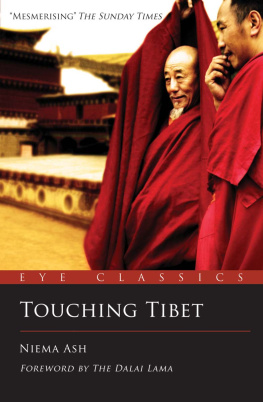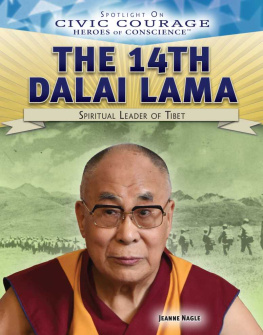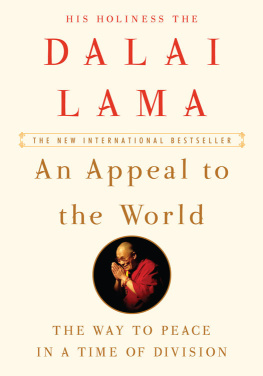
This Eye Classics edition first published in Great Britain in 2011, by:
Eye Books
29 Barrow Street
Much Wenlock
Shropshire
TF13 6EN
www.eye-books.com
First published in Great Britain in 2003
Copyright Niema Ash
Cover design by Emily Atkins/Jim Shannon
Text layout by Helen Steer
The moral right of the Author to be identified as the author of the work has been asserted.
All rights reserved. No part of this publication may be reproduced, stored in a retrieval system or transmitted in any form or by any means without the prior written permission of the publisher nor be otherwise circulated in any form of binding or cover other than that in which it is published and without a similar condition being imposed on the subsequent purchaser.
British Library Cataloguing in Publication Data
A catalogue record for this book is available from the British Library
The paperback edition of this book is printed in Poland.
ISBN: 978-1-903070-67-3
For my daughter Ronit
C ONTENTS
A CKNOWLEDGEMENTS
With thanks to Gil Elliot for his valuable suggestions in the early days and for his support throughout; to David Wallenchinsky, Cedric Smith, Ugyan Norbu, Gyurme Dorje, Phuntsog Wangyal and Stephanie Rayner for their help; to the Tibetan specialists, Stephen Bachelor and Glenn H. Mullin for their corrections. Very special thanks to Tim Fowkes and Doune Storey for helping me remember, and for a constant supply of encouragement, and especially to Tim for his patient understanding.
F OREWORD BY H IS H OLINESS THE D ALAI L AMA
I t has never been easy to visit Tibet, the high mountains and empty plains which surround it have deterred all but the hardiest travellers. In the past, even those who overcame such difficulties were viewed with suspicion by the local people and discouraged from continuing their journeys. Nowadays, despite great improvements in travel facilities, it remains almost impossible to visit Tibet, because the Chinese occupying forces wish to conceal their treatment of the Land and its inhabitants from outside view. As a result Tibet continues to be surprisingly unknown to the world at large, whether in terms of its spectacular landscape, its colourful history or the present plight of its people. For a brief period travellers were allowed almost unrestricted access and a fortunate few managed to take advantage of it. Niema Ash was one of those and in Touching Tibet she tells of her adventures.
No one can communicate an experience better than someone who has felt it themselves. Here the author shares her fervour not only for the awesome terrain with its striking landmarks, but also for the Tibetan people whose warm-hearted human qualities are undiminished by the hardship they have undergone. I hope that readers will enjoy the book as well as learning something about Tibet.

I NTRODUCTION
T his book does not profess to be a sociological, political or historical study of Tibet, nor is it an intellectual discourse, rather it is an experience, an adventure, a journey. You, the reader, will discover Tibet, as I, the writer, discover it. You will come to know the country and its people, their heartache, their joy, as I come to know them. You will travel with me, laugh with me, hurt with me as Tibet enfolds before us its culture, its rituals, its celebrations, its sorrows. You will come to understand, as I came to understand, why such a remote country, with a culture, a life style and a spiritual focus so removed from our own, has captured the imagination of such a wide spectrum of people travellers, artists, writers, movie directors, TV and film celebrities, pop stars, politicians, statesmen and women, world leaders, as well as ordinary people with interests neither in politics nor in travel. You will journey through a landscape which is no longer traversable, discover the spiritual richness, the incomparable treasures hidden in a poor, remote, isolated corner of the earth; you will see a picture of Tibet which can no longer be painted.
Entry into Tibet has been forbidden for centuries. Once, in bordering Nepal, I stood gazing up at the distant, towering, snow mountains encircling Tibet and I instinctively felt that those peaks enclosed a land truly different from others, a land unknown, a people unknown, and I experienced a great desire to know. Miraculously, I was granted that opportunity some years later, when Tibets Chinese occupiers, exploiting an opportunity to obtain hard foreign currency, earth to shout her cry for Tibet from its loftiest peak; or organizations like Tibet House in New York, chaired by the actor Richard Gere, who declared 1991, The Year of Tibet and initiated worldwide programs and events dedicated to the survival of Tibet talks, exhibitions, performances, marches, candlelit vigils, anything possible, anywhere possible to build awareness of the great loss to civilization should the Chinese succeed in their 25 years of attempted genocide.
When I was in Tibet I hardly came into contact with the Chinese. I stayed in a Tibetan guest house, ate with Tibetans, travelled with them, visited their monasteries, their temples, and their homes. But all that has changed. Now Tibetans can be punished for talking to foreigners. Surveillance cameras are everywhere. It is only possible to enter Tibet as part of an organized group. Tour groups are assigned guides, agendas are set by Chinese officials and carefully monitored, deviation is forbidden. Armed soldiers stand guard to ensure this.
The Lhasa I knew was mainly a Tibetan city with a strong Tibetan identity. You will experience with me its smells, its sounds, its tastes, before the Tibetan section was reduced to 5% of the city, before the Chinese introduced bars, discos, prostitution; before they used karaoke and casinos to undermine the Tibetan identity, before Lhasa was ringed with gun posts, and resounded with military activity.
Along with me you will venture into the magnificent Potala Palace, home of successive Dalai Lamas, the sacred centre for all Tibetans, before it had a fun fair built at its back, before the village of traditional houses at its base was razed to the ground and replaced by a large Tiananmen style concrete square, decorated with military emblems and glaring lights; before it was studded with surveillance cameras both inside and out; before this most holy place for Tibetans, the very symbol of Tibet, had been reduced by the Chinese, to a quaint relic, an entertainment, at best, a museum.
However, the Chinese attempt to destroy the Tibetan soul by destroying its national identity, its language, religion, culture, customs, its heritage, even its dress, has not succeeded. Being in Tibet at a time when I was free to experience the land and its people, free to appreciate the beauty and value of its unique culture, allowed me to see why this is so. I came to know what sustains the Tibetans, what gives them the strength to survive the brutality of Chinese opened its doors to individual travellers. I was fortunate to come to Tibet during that brief period, before the Chinese sealed it once again from the eyes of the world, admitting only a peep-hole glimpse, with the spy glass under their strict control.
In Touching Tibet you will experience Tibet in a way which is no longer possible, participate in its most sacred rituals, now forbidden, travel with Tibetans, enter their homes, enter their world, see it both from the inside and the outside, as I was able to see it before the close association with Tibetans became too risky. I will take you with me to meet Tibetans, to spend time with them, to come to know a people who are not consumed with the acquisition of material things as their source of happiness, who do not devote their talent and energy to creating instruments to kill fellow humans, who believe that peace in ones heart and peace in the world are connected, who have not attacked another country for over 1000 years. You will come to know a people whose religious beliefs do not compel them to convert others, who live toleration, caring for people, for animals, for the environment, for peace in the world; who honour a spiritual leader whose main platform is compassion and non-violence. You will contact one of the great spiritual civilizations on this planet. You will see, up close, what is being lost to humanity through the Chinese policy of cultural and spiritual extinction; to understand why Tibetan survival is so important for humankind; to understand why we have many lessons to learn from Tibet.
Next page








